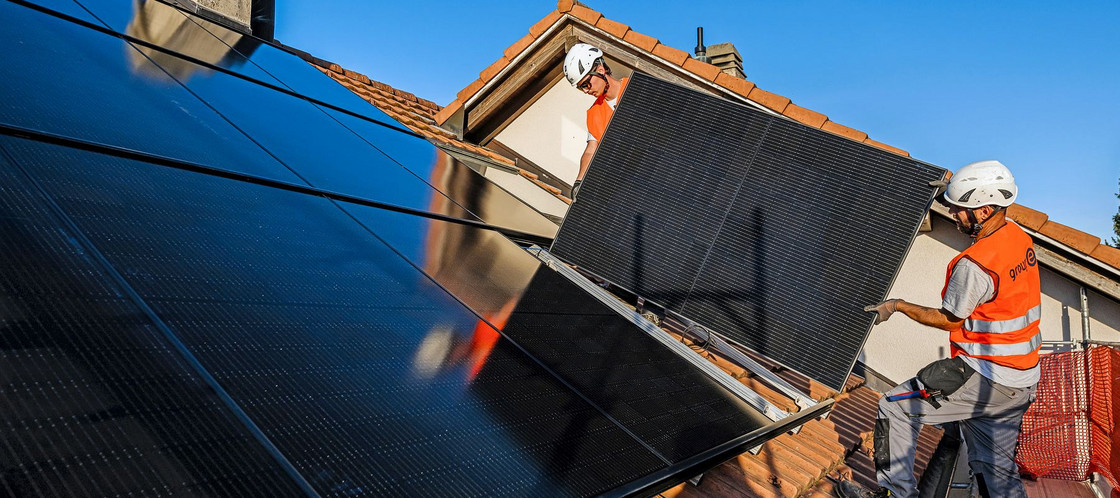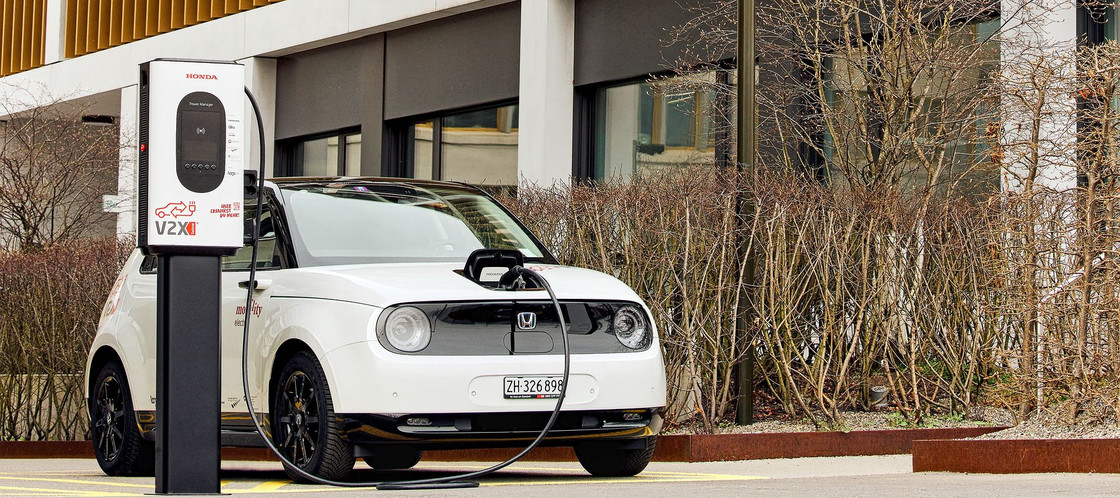- Nature and the environment
In the future, millions of cars will combine their batteries
04.10.2024 – STÉPHANE HERZOG
Car batteries, connected to a single network, can create power grids. This will enable solar energy to power electric cars. Mobility, the Swiss car-sharing company, has carried out a full-scale test of the technology.
The Swiss love their cars, but the fact is that the country’s approximately 4.8 million passenger cars spend most of their time immobile. They are parked for up to 23 hours a day, with their battery cut off from the world. In the future, cars – which will soon all be electric – will be interconnected via intelligent electrical networks. They will form storage facilities, as when water is stored in a dam.
“Thanks to bidirectional charging which allows cars to either send or receive energy, Switzerland has a massive power reserve at its disposal,” says Volker Fröse, a consultant cited by car-sharing specialists Mobility. In the evening, at dinnertime – when demand for electricity peaks – computers will tell the connected batteries to supply current to the grid. During the day, solar panels will feed power into the cars, treating them like mobile batteries. The entire system will be an example of the vehicle-to-grid (V2G) principle: a network of bidirectional batteries that can receive, store and supply electricity within a local or global network.
Recharge your battery overnight
“The average car battery can hold 60 kilowatt-hours (kWh), whereas a stationary battery in a house equipped with solar panels holds only 6 kWh. Many people have solar panels but no battery for them. The benefits of using your car as an electrical battery are therefore obvious,” explains Valais engineer Arnaud Zufferey, a graduate of the Swiss Federal Institute of Technology Lausanne (EPFL). A 7 kW charging station takes only one hour to charge ten percent of a battery. “This allows you a lot of flexibility when topping up your battery: you can do it at lunchtime, when solar energy production is at its peak, or overnight, when charges are low,” he says. So, when will Switzerland, with its love of cars and solar panels, usher in this revolution? Mobility ran a full-scale test between autumn 2022 and spring 2024. The car-sharing company connected up a fleet of 50 electric cars, each fitted with a bidirectional battery. The test involved rolling out these cars all across Switzerland – where they had to be available at any time – and connecting them to different electricity providers, as Mobility explained.
Electric cars connected together on the grid can store latent power in much the same way as the water in dams that provide electricity.
During the 18-month test, around 7,000 people drove approximately 800,000 kilometres. When stationary, the cars ‘sold’ electricity to the grid, generating up to 2,000 Swiss francs in revenue per vehicle per year, according to Mobility, although they admit that running a V2G system is not viable for a car-sharing company under current circumstances. “The era of bidirectional electric cars is imminent, but it will take another few years before this technology becomes widespread,” the company states. “Bidirectional charging is not a sales argument, because the system is not ready yet,” Zufferey confirms. Indeed, there are hardly any bidirectional electric vehicles in Switzerland today, says the Swiss Association for Transport and Environment. Although Valais engineer Zufferey does drive a solar-powered car, his vehicle is not intelligent. For example, his car’s battery cannot return energy to the grid when demand is at its highest – and when the price for repurchasing current is also higher.
Trade war over virtual factories
The pieces of the puzzle are all in place, but we still need operators and systems to bring the different strands together. “Currently, I have a brand X car, a brand Y charging station and a brand Z energy supplier,” Arnaud Zufferey says by way of illustration. This emerging market is making major manufacturers salivate. VW, for example, is working on a system that encompasses solar power, charging stations and cars.
Tesla is already offering its customers an integrated solution. Each brand will be aiming to unite thousands of electric cars to form virtual factories. The operator will manage the charging stations remotely and will balance out the power grid. The batteries will be connected to the system via the internet, and will distribute energy locally as required. In the winter, tourist resorts like Crans-Montana will need more electricity, whereas this will not be necessary in locations equipped with wind turbines or a hydroelectric power station. A spike in demand for electricity in a block of flats could be met by the cars parked outside and connected to the system. At the same time, those cars could recharge themselves fully from the network overnight, when the price is low.
The issue of energy traceability
The new federal law on electricity, adopted in June 2024, already sets out some developments that will facilitate V2G. The changes include a rule that will prevent customers having to pay twice for energy transfers to and from their cars. Converting cars to virtual power plants also means that the energy tracing system will have to be adapted. “In any given grid, operators and customers want to know whether the electricity comes from a nuclear power station, solar or wind,” explains the Valais engineer. “We are leading the charge for innovation in Europe,” affirms Fabien Lüthi, spokesman for the Federal Department of the Environment, Transport, Energy and Communications. He adds that the Swiss Confederation is working closely with the European Union to establish mutually compatible standards. Battery cars will be introduced in stages. Firstly, the current between solar panels and car batteries will need to be managed dynamically, in order to allow electricity to be stored instead of pouring power into a grid that is already overloaded or tapping a car for energy when you are cooking dinner. Secondly, V2G must be able to handle supply and demand at a neighbourhood, urban and cantonal level. This whole system will rely in part on the energy produced by solar panels, whose popularity in Switzerland is growing exponentially.













Comments